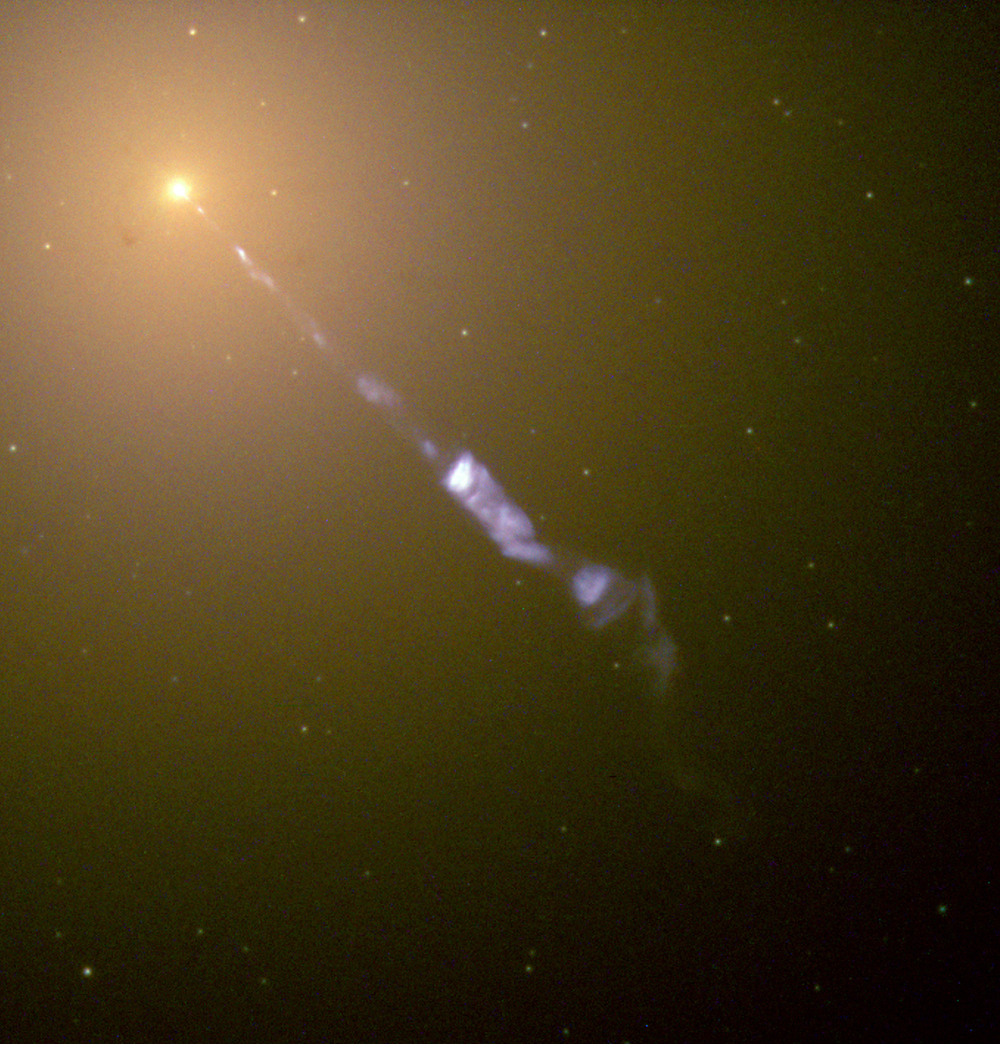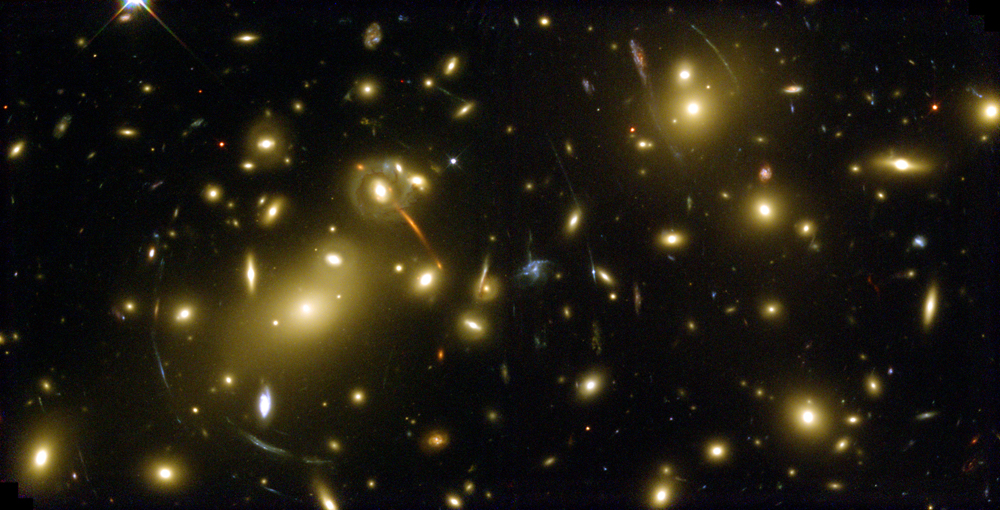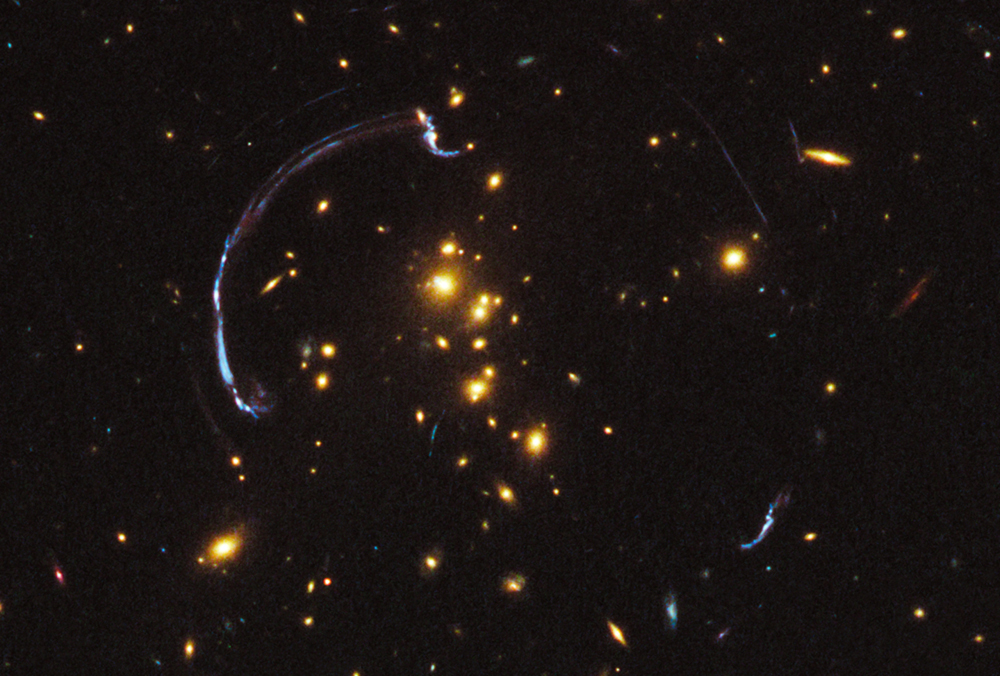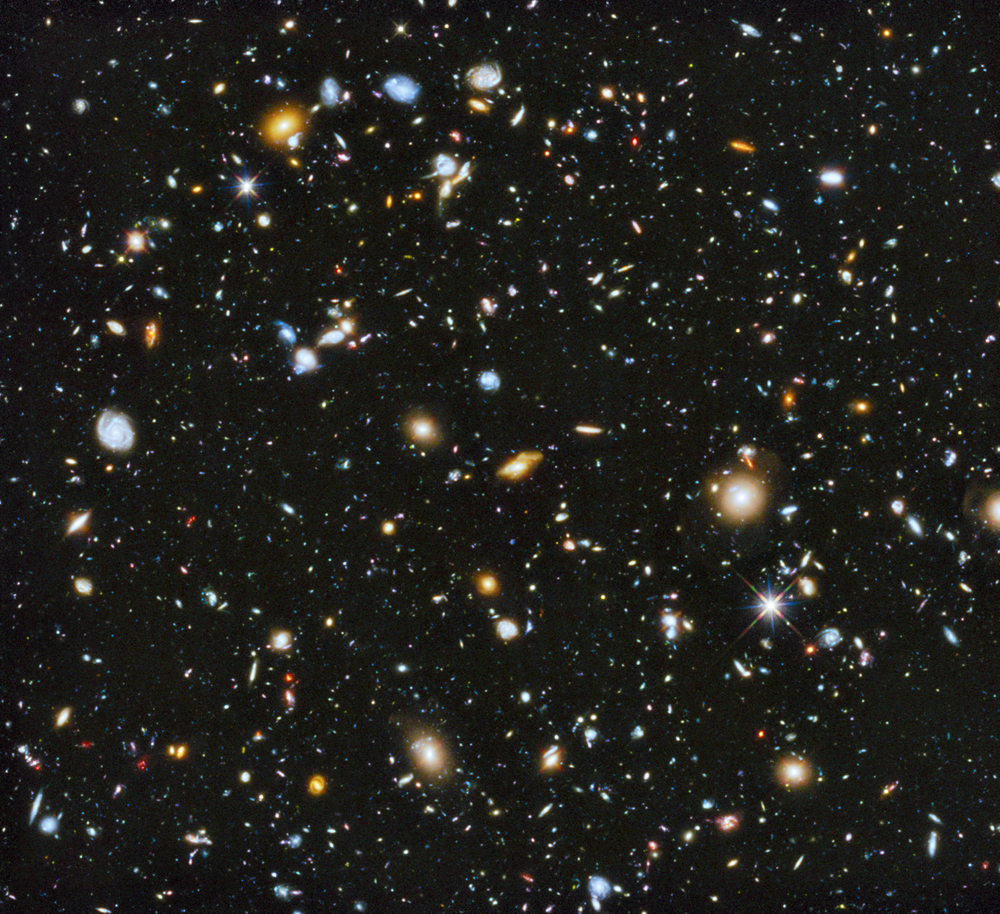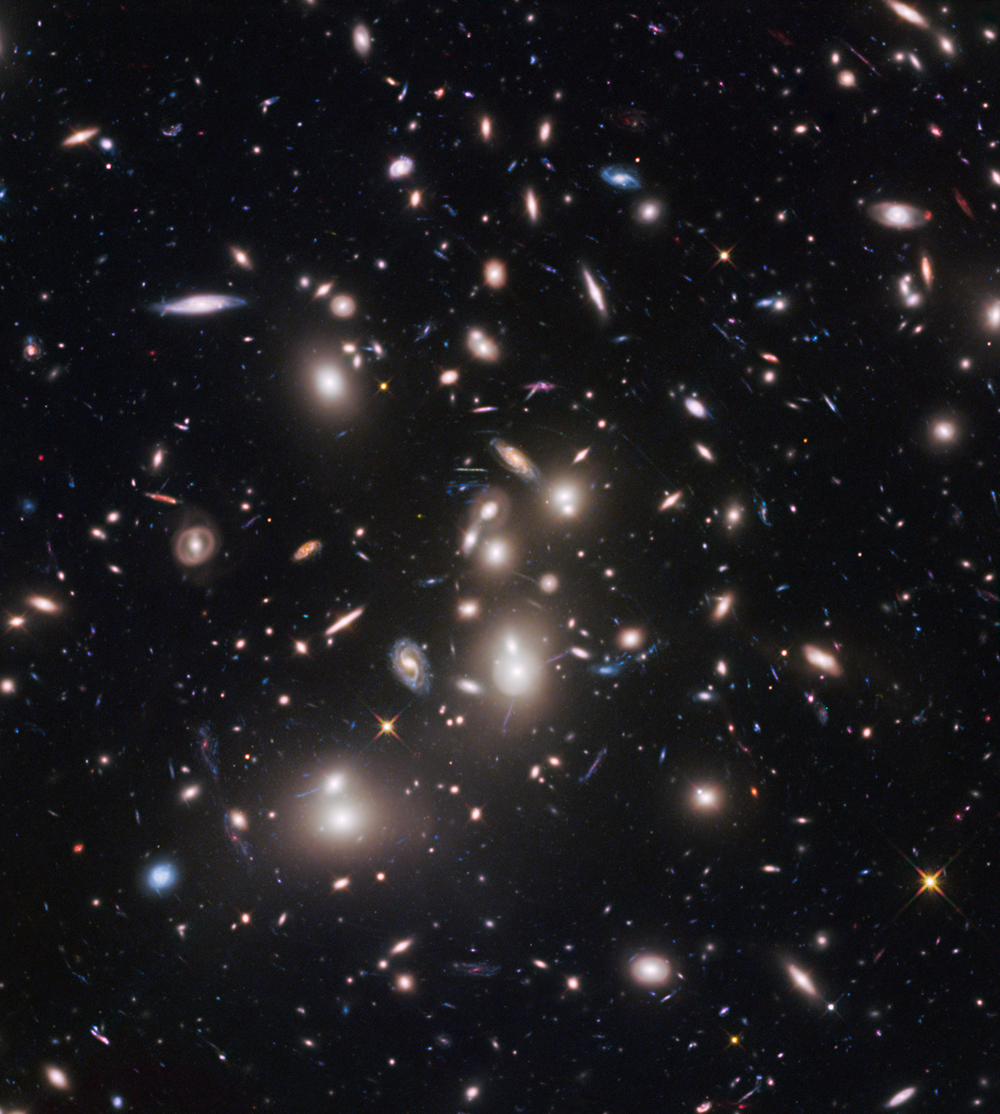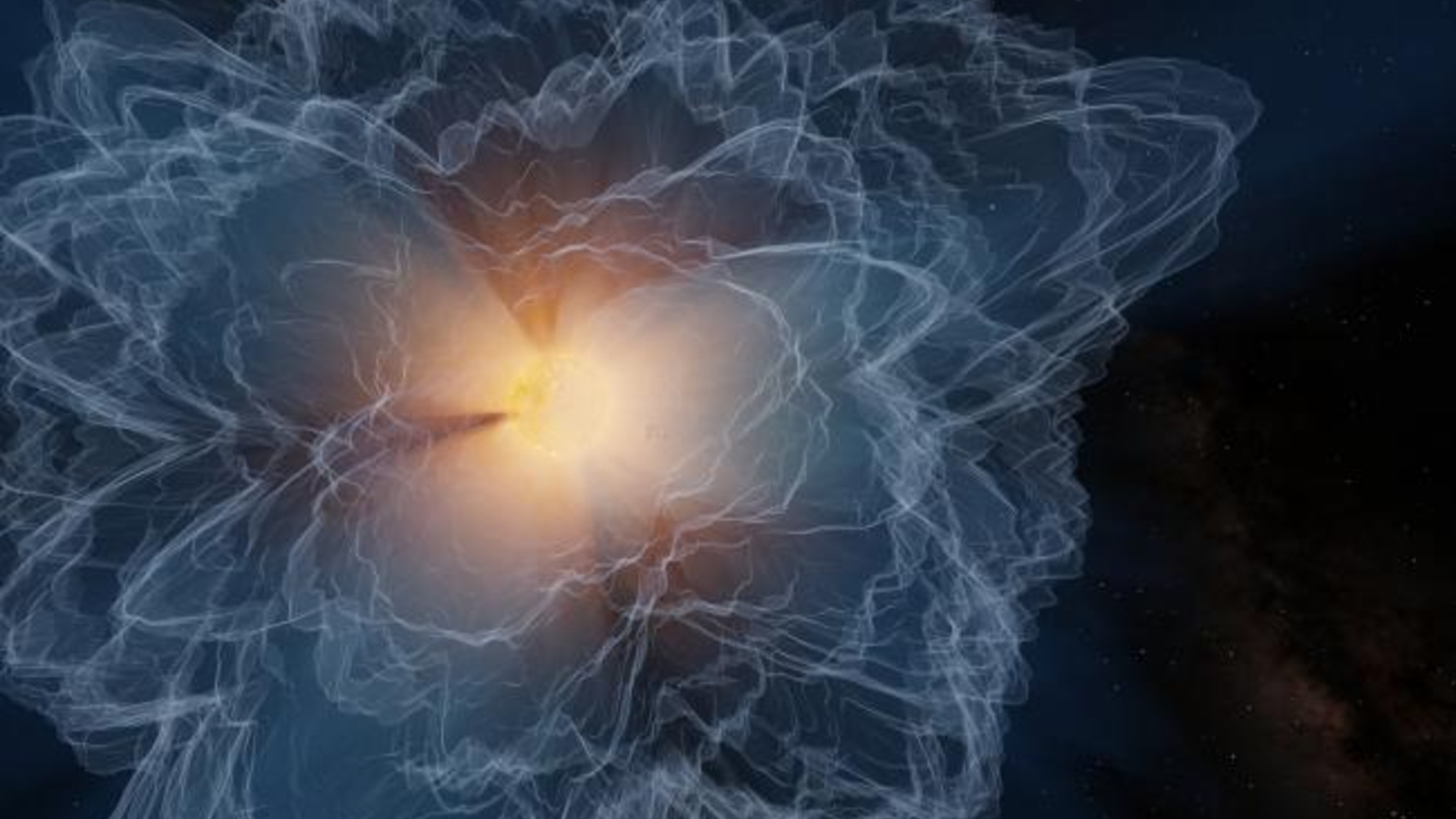Hubble in Pictures: Astronomers' Top Picks (Photos)

Michael Drinkwater, University of Queensland
Our best computer simulations tell us galaxies grow by colliding and merging with each other. Similarly our theories tell us that when two spiral galaxies collide, they should form a large elliptical galaxy. But actually seeing it happen is another story entirely.
This beautiful Hubble image has captured a galaxy collision in action. This doesn’t just tell us that our predictions are good, but it lets us start working out the details because we can now see what actually happens.
There are fireworks of new star formation triggered as the gas clouds collide and huge distortions going on as the spiral arms break up. We have a long way to go before we’ll completely understand how big galaxies form, but images like this are pointing the way.
Roberto Soria, Curtin University
This is the highest-resolution view of a collimated jet powered by a supermassive black hole in the nucleus of the galaxy M87 (the biggest galaxy in the Virgo Cluster, 55 million light years from us).
The jet shoots out of the hot plasma region surrounding the black hole (top left) and we can see it streaming down across the galaxy, over a distance of 6,000 light-years. The white/purple light of the jet in this stunning image is produced by the stream of electrons spiralling around magnetic field lines at a speed of approximately 98% of the speed of light.
Understanding the energy budget of black holes is a challenging and fascinating problem in astrophysics. When gas falls into a black hole, a huge amount of energy is released in the form of visible light, X-rays and jets of electrons and positrons travelling almost at the speed of light. With Hubble, we can measure the size of the black hole (a thousand times bigger than the central black hole of our galaxy), the energy and speed of its jet, and the structure of the magnetic field that collimates it.
Jane Charlton, Pennsylvania State University
When my Hubble Space Telescope proposal was accepted in 1998 it was one of the biggest thrills of my life. To imagine that, for me, the telescope would capture Stephan’s Quintet, a stunning compact group of galaxies!
Breaking space news, the latest updates on rocket launches, skywatching events and more!
Over the next billion years Stephan’s Quintet galaxies will continue in their majestic dance, guided by each other’s gravitational attraction. Eventually they will merge, change their forms, and ultimately become one.
We have since observed several other compact groups of galaxies with Hubble, but Stephan’s Quintet will always be special because its gas has been released from its galaxies and lights up in dramatic bursts of intergalactic star formation. What a fine thing to be alive at a time when we can build the Hubble and push our minds to glimpse the meaning of these signals from our universe. Thanks to all the heroes who made and maintained Hubble.
Geraint Lewis, University of Sydney
When Hubble was launched in 1990, I was beginning my PhD studies into gravitational lensing, the action of mass bending the paths of light rays as they travel across the universe.
Hubble’s image of the massive galaxy cluster, Abell 2218, brings this gravitational lensing into sharp focus, revealing how the massive quantity of dark matter present in the cluster – matter that binds the many hundreds of galaxies together – magnifies the light from sources many times more distant.
As you stare deeply into the image, these highly magnified images are apparent as long thin streaks, the distorted views of baby galaxies that would normally be impossible to detect.
It gives you pause to think that such gravitational lenses, acting as natural telescopes, use the gravitational pull from invisible matter to reveal amazing detail of the universe we cannot normally see!
Rachel Webster, University of Melbourne
Gravitational lensing is an extraordinary manifestation of the effect of mass on the shape of space-time in our universe. Essentially, where there is mass the space is curved, and so objects viewed in the distance, beyond these mass structures, have their images distorted.
It’s somewhat like a mirage; indeed this is the term the French use for this effect. In the early days of the Hubble Space Telescope, an image appeared of the lensing effects of a massive cluster of galaxies: the tiny background galaxies were stretched and distorted but embraced the cluster, almost like a pair of hands.
I was stunned. This was a tribute to the extraordinary resolution of the telescope, operating far above the Earth’s atmosphere. Viewed from the ground, these extraordinary thin wisps of galactic light would have been smeared out and not distinguishable from the background noise.
My third year astrophysics class explored the 100 Top Shots of Hubble, and they were most impressed by the extraordinary, but true colours of the clouds of gas. However I cannot go past an image displaying the effect of mass on the very fabric of our universe.
Kim-Vy Tran, Texas A&M
With General Relativity, Einstein postulated that matter changes space-time and can bend light. A fascinating consequence is that very massive objects in the universe will magnify light from distant galaxies, in essence becoming cosmic telescopes.
With the Hubble Space Telescope, we have now harnessed this powerful ability to peer back in time to search for the first galaxies.
This Hubble image shows a hive of galaxies that have enough mass to bend light from very distant galaxies into bright arcs. My first project as a graduate student was to study these remarkable objects, and I still use the Hubble today to explore the nature of galaxies across cosmic time.
Alan Duffy, Swinburne University of Technology
To the human eye, the night sky in this image is completely empty. A tiny region no thicker than a grain of rice held at arms length. The Hubble Space Telescope was pointed at this region for 12 full days, letting light hit the detectors and slowly, one by one, the galaxies appeared, until the entire image was filled with 10,000 galaxies stretching all the way across the universe.
The most distant are tiny red dots tens of billions of light years away, dating back to a time just a few hundred million years after the Big Bang. The scientific value of this single image is enormous. It revolutionised our theories both of how early galaxies could form and how rapidly they could grow. The history of our universe, as well as the rich variety of galaxy shapes and sizes, is contained in a single image.
To me, what truly makes this picture extraordinary is that it gives a glimpse into the scale of our visible universe. So many galaxies in so small an area implies that there are 100 thousand million galaxies across the entire night sky. One entire galaxy for every star in our Milky Way!
James Bullock, University of California, Irvine
This is what Hubble is all about. A single, awe-inspiring view can unmask so much about our Universe: its distant past, its ongoing assembly, and even the fundamental physical laws that tie it all together.
We’re peering through the heart of a swarming cluster of galaxies. Those glowing white balls are giant galaxies that dominated the cluster center. Look closely and you’ll see diffuse shreds of white light being ripped off of them! The cluster is acting like a gravitational blender, churning many individual galaxies into a single cloud of stars.
But the cluster itself is just the first chapter in the cosmic story being revealed here. See those faint blue rings and arcs? Those are the distorted images of other galaxies that sit far in the distance.
The immense gravity of the cluster causes the space-time around it to warp. As light from distant galaxies passes by, it’s forced to bend into weird shapes, like a warped magnifying glass would distort and brighten our view of a faint candle. Leveraging our understanding of Einstein’s General Relativity, Hubble is using the cluster as a gravitational telescope, allowing us to see farther and fainter than ever before possible. We are looking far back in time to see galaxies as they were more than 13 billion years ago!
As a theorist, I want to understand the full life cycle of galaxies – how they are born (small, blue, bursting with new stars), how they grow, and eventually how they die (big, red, fading with the light of ancient stars). Hubble allows us to connect these stages. Some of the faintest, most distant galaxies in this image are destined to become monster galaxies like those glowing white in the foreground. We’re seeing the distant past and the present in a single glorious picture.
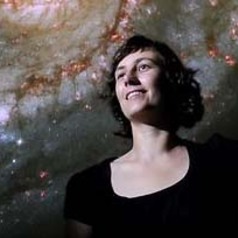
I am an extragalactic astronomer, Honorary Fellow of the University of Melbourne, and am currently working in the field of science communication at Melbourne Planetarium.
I have been the Curator (Astronomy) at Melbourne Planetarium, Scienceworks since 1999, drawing on my background in research astronomy to create more than a dozen planetarium productions. The most recent of these are now screened in over fifty planetariums across sixteen countries world-wide.
I am proud to be the Australian Representative of the European Southern Observatory’s (ESO) Science Outreach Network. This sees me working with Astronomy Australia Limited (AAL) to promote ESO’s extensive research accomplishments throughout Australia.
I am also involved in projects to bring research astronomy data into the planetarium to both engage the public and to turn the planetarium into a tool for research astronomers wanting to know more from their data.

